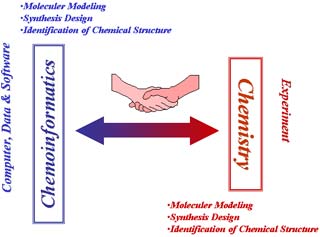Computers help chemists fight off acute infections
Danh Phuong
Computer-based analysis of current drugs may be key to fighting new infectious agents and antibiotic-resistant pathogens like deadly tuberculosis and hard-to-kill staph viruses.
Researchers in Canada say that using the " emergency detection " technique will save time, money and save many people during a sudden outbreak or bioterrorism attack.
According to the presenter of the study of Artem Cherkasov, Ph.D., British Columbia University in Vancouver, Canada, presented at the national press conference of the American Chemical Society - Is reshaping or re-planning the drug New: Drug companies are hunting for new uses for older drugs to expand proprietary protection, and until when the purpose of using non-stamped drugs is found. . But shaping to prudently develop emergency drugs is a new concept, which has made it possible because advances in the field of chemotherapy in chemistry, is a new area, combining chemistry with Computer science.

(Photo: Dost-dongnai)
Cherkasov, a prospective chemist in computer-aided medicine design and infectious disease, said: 'In a situation where there are many threats of infection, there will be no time to develop a complete drug. all new without a preparation plan, because the study of the respective toxins and regulatory surveys will take years to complete satisfactorily '.
'The discovery of a drug that is currently available, carefully studied for treatment will destroy an acute bacterial infection that causes us to choose a safe and quick answer.'
Cherkasov said: Under the new computer-assisted system, the researchers plan to first determine the vulnerable cell component of a pathogen, using protein resolution analysis. , either by studying proteins or their interactions . They will import this key structure into computers, using modern ' Artificial Intelligence ' elements that will help identify the drug with the greatest potential for anti-target activity and anti-activity. virus.
The researchers said: "The compounds listed on that highest 'rank' will then be tested very quickly in the laboratory against pathogens and ultimately used to treat individuals who suffer from infection."
The new method is still being developed for future purposes during the current outbreak of infectious disease, Cherkasov noted.
However, when using this technique, many non-antibiotic drugs have been shown to have antibiotic-like properties. For example, a computer-based study suggested that lovastatin , a drug consumed in the market, reduces blood cholesterol, gentisic acid, a relative anti-inflammatory drug with aspirin, both promising. are strong antibiotics. But more studies are needed before these compounds can be introduced for use as antibiotics in the medical examination and treatment environment.
Cherkasov said: 'This is completely no longer expected because there are thousands of drugs currently circulating that are enhanced by the characteristics of the target coordination structure, many are not intended to be drugs. but antibiotics have the potential to play that role. '
'The chemical structure of the compounds that we identify often looks like no other antibiotics we know of. But if a compound is present as an antibiotic in the computer model, it acts as an antibiotic in real life. '
According to Cherkasov, development needs to be expanded and complemented with the available antimicrobial compounds, as many large pharmaceutical companies have withdrawn from the field of manufacturing anti-infectious substances.
Researchers plan to soon start testing some of the recently identified antibiotic candidates against methicillin-resistant bacteria (Methicillin-Resistant Staphylococcus Aureus, MRSA for short). Also known as ' viruses ', these bacteria are causing more and more anxiety for infectious diseases, based on a serious hospital case and communicable diseases. Acute infection in community settings.
Although Cherkasov's team often fights with infectious diseases caused by bacteria, the same technique can be applied to acute infectious diseases caused by viruses, such as SARS, influenza. Poultry. Similarly, technology also provides us with a potentially rapid means of identification and treatment for bioterrorism agents, such as new anthrax, as well as infectious diseases. rarely as diseases sometimes occur in third world countries.
Note: This report is adapted from a news release published by the American Chemical Society.
- New vaccines can fight common infections
- Acute pancreatitis: Symptoms, treatments and prevention
- Acute diarrhea in the elderly: Can not be underestimated
- How dangerous is acute pancreatitis?
- Detects the memory memorization structure dealing with infections in the human body
- Deal with 4 common diseases of hot season in young children
- Garlic can fight lung infections
- Signs to recognize whooping cough parents need to know
- Understand disease to use antibiotics correctly
- When do you need to say 'no' to antibiotics?
- Face 25 most terrible computer viruses of all time
- Be careful of infections when it is cold
 Green tea cleans teeth better than mouthwash?
Green tea cleans teeth better than mouthwash? Death kiss: This is why you should not let anyone kiss your baby's lips
Death kiss: This is why you should not let anyone kiss your baby's lips What is salmonellosis?
What is salmonellosis? Caution should be exercised when using aloe vera through eating and drinking
Caution should be exercised when using aloe vera through eating and drinking